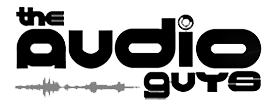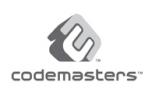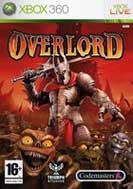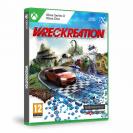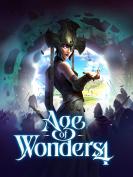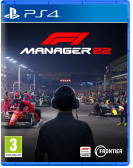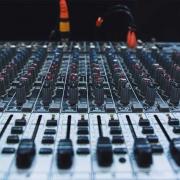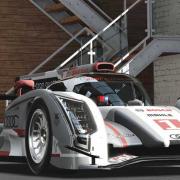Overlord Development Blog
By TAG , 1 Jul 2008
This is the first part of a blog about the audio development of Overlord…….
Hi there, I’m Dan Gardner and I was the audio lead on Overlord, obviously Tim also helped out lots on this project, but I had all the headaches :). I’ve tried to put together a diary outlining some of the work involved in making the audio for the game. Much of this is written retrospectively (reading back over daily work logs where memory failed me).
Added in a few screenshots (from the final game) helping to illustrate the characters/maps that we were working on at that time, and also to pretty up the page a bit Hope you enjoy!
Jan 2006
I was working at Codemasters, just finishing off working on Race Driver 3, when I heard about a new project called Overlord, produced by Triumph Studios in Holland, as soon as I saw the game I wanted to work on it as it looked great fun. By way of an audition Triumph asked me to create the sound for a short teaser FMV. I did this, they really liked it, and after a visit over to meet all the team, in Holland, they wanted me to do the sound for their game! yippee!
Feb 2006
About this time Tim and I had started the wheels in motion on leaving Codemasters and setting up The Audio Guys, consequently, we were really hoping we could continue to work on Overlord, as our first project, after leaving Codemasters.
April – May 2006
Having set up The Audio Guys, with Overlord as our first project We worked with Triumph on audio planning/scheduling and roughing out an audio design. The sound system used in Overlord is Miles, which is integrated into Triumph’s bespoke toolset and editors. Basic sound integration begins, starting on combat sounds and core sounds such as item pickup/drops, fires, footsteps, basic creature sounds. A small area of the Dwarf Domain was mocked up for testing of environmental sounds and systems. A few weeks in, and we started work on some Halfling sounds for an E3 demo, which would be the first public showing of Overlord…eek!
June – Aug 2006
During this period of development all the game tools were radically re-written to integrate some major 360 conversion work, and to also streamline some of the editors. This was quite a long process and ended up taking a little while to get back up to speed, as the entire process for sound integration had changed. All sounds and audio parameters now needed to be readded, but there were some kewl new features, such as the ability to add multiple sound triggers to each character action, whereas previously we had only been allowed one per action. This improvement meant we could adopt much more of an particle/element based approach when designing the character sounds. Now we can have a looping sound, while another sound triggers randomly, while others trigger at set points during the animation, and all this for just one of the characters actions! All this resulted in much more variation in character sounds, with less memory use, which is nice
There was a fair amount of time spent after this conversion assessing the new toolset and working out what features were now improved and which features were now not functioning correctly. This process involved a lot of debate and discussion between ourselves and the development team, assessing impact and priorities of audio features.
Sept – Oct 2006
This is where the real audio game integration work began! There had obviously been many sounds added already, such as Rock Giant and Rat and Dwarves, also combat, movement and basic world sounds, but this was all in prototype areas that would not be in the final game. At this point full game level design was already in full swing and game elements were starting to be in the state where audio could be added reliably.
Triumph had the idea of working on one of the game levels from about halfway through the game, instead of the the normal starting point for game development, at the beginning. The Dwarf Domain was chosen as the domain to start. Each domain consists of a main domain area, and a series of sub-domain areas leading from it, and all these areas are populated by various characters and creatures.
Initially, we worked on creating/preparing and fleshing out the Overlord / Minion combat and movement sounds as these would be the most commonly heard sounds for the player. Until now the game had just a few placeholder sounds and these were becoming very annoying, as there were only a few variations. So, first of all we added a lots of variation here, for example for the Minions we use 15 – 25 samples for each different weapon impact, and these all have volume and pitch variation. For the Overlord character audio we worked on designing much larger sounding, more impressive combat/movement audio.
The other characters were all relatively straightforward to do, with the Rock Giant coming out sounding especially good, even if we do say so ourselves The Dwarves were ok, but still needed some work on the emotes, and the Red Beetles ended up sounding very insect like, although one of the sounds we used really irritated the Lead Designer, it was quite a harsh intense insect clicking sound, it would do for placeholder, but we will have to change it.
We then started work on the environmental world sounds for the Dwarf Domain. This domain consists of one main domain – an open environment with small rocky, forested areas and 5 sub-domains – Gold Mine, Arcanium Mine, Homey Halls, Quarry, Royal Halls. Initially, these areas were quite time consuming to get sounding right, partly because these were the first proper game levels and the dev team obviously wanted everything to sound perfect, and partly because this was the first proper full sound integration that we had done and hence were encountering quite a few code issues, and partly because these levels have some especially cool art and detailed level design, and so the accompanying sounds needed to match this quality.
In the end, most of the sub domains were relatively straightforward to add sounds to, as most areas have lots of action going on, with fountains, pumps, lava flows, gas pipes, fires. Once all these sounds were in place, we then added various low level background looping ambiences, combined with many different one-shot triggers, such as creaking wood/metal/rope, birds, undergrowth rustles, etc, to help bring the World to life.
The Arcanium Mine proved to be very tricky to get it to a state where everyone was happy. Adding sounds for all the objects in this area quickly resulted in a ‘mush’ of just too much sound! No amount of mixing seemed to solve the problem. So, we experimented with filtering some of the bigger sounds/ambiences to only allow the frequencies we wanted into the mix, this helped a little. Also, we added sound markers with smaller roll-offs to keep a tighter control over the sound in each zone of the Arcanium Mine.
At this point in development various problems were encountered with too many channels being requested from the audio system. This became apparent once the Arcanium Mine was becoming more complete, due to the number of fires, torches, lava, creaking, characters, in addition to all the Minion sounds. This was addressed by implementing a maximum voices limit on groups of sounds, so we can control how many sounds from a particular sound group are triggered at any one time, with variation and timings on how they restart triggering after the max is reached. This, coupled with the audio priority system, proved to be a very useful system for controlling the mix of the game under massively varying situations.
After working on a milestone delivery for the Dwarf domain, and other non-domain specific audio, it was reviewed by Triumph and Codemasters and decided that the style of the audio was not quite right. Some detailed feedback was given, but it was quickly decided that we should visit Triumph in Holland to get the audio style well and truly nailed, whilst we can sit down with the Designers and Artists, face to face. After a 4 day visit we made lots of progress, and felt we all were completely on the same page with regards to the overall audio style of the game. From this point we went back and redesigned all the interface sounds and a lot of the main Overlord sounds to be much darker and more powerful.
